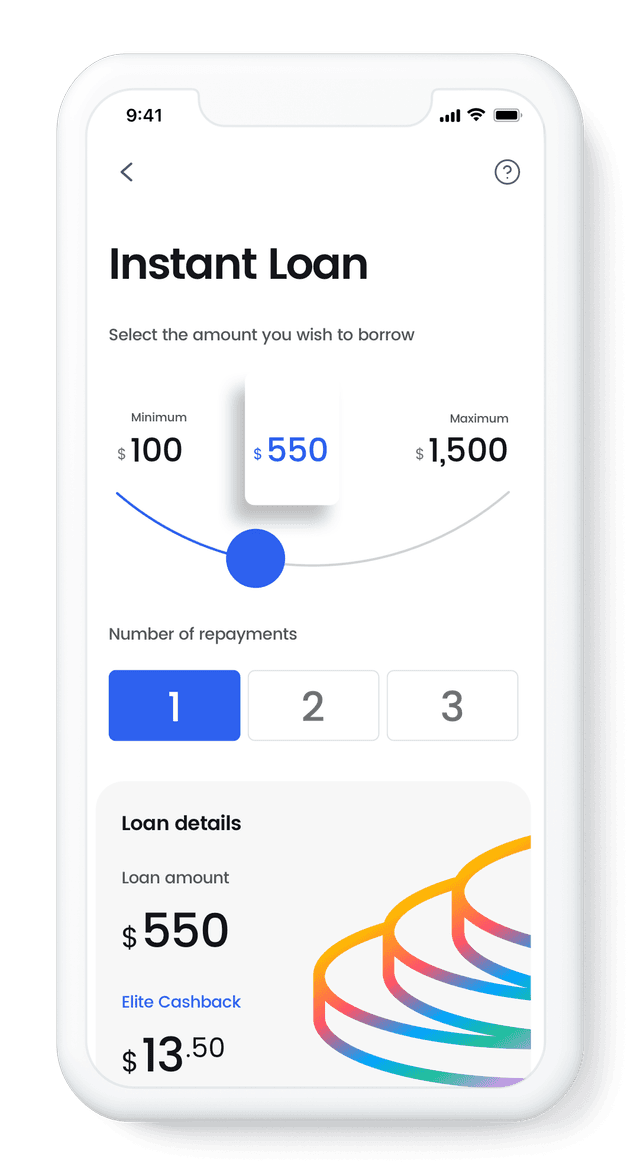High grocery prices in Canada are concerning for many households. It’s not uncommon to spend hundreds of dollars on groceries each month - a significant expense for any budget.
This affects the immediate financial stability of families. It also raises questions about broader economic factors. Inflation, supply chain disruptions, and increased production costs are among the key drivers pushing up grocery prices in Canada.
As we look deeper, identifying strategies to save money on grocery shopping without compromising quality is essential. With strategic planning, you can stretch your grocery budget further, regardless of what Canada grocery prices continue to do.
But, if you need more money for groceries, a short-term loan can help. You can apply and get cash in 2 minutes to cover your grocery expenses. Whatever your situation, approach your grocery budget with a plan. Below, we'll dive into practical tips to help you manage Canada grocery prices more effectively.
Canada Grocery Prices: Why Are They So High?
Why are Canada grocery prices so high? It’s a question that almost everyone has asked. When you’re trying to save money on grocery shopping, you’ll want to understand the factors that contribute to the high food costs in Canada.
If you understand these factors, you’ll make informed choices at the grocery store and when setting your grocery budget. The following are some of the main reasons why Canada grocery prices are so high right now.
Geographic Location: Canada is a vast country with a relatively small population. This means that the cost of transporting goods - especially fresh produce - can be high due to longer distances and limited transportation options.
A prime example of this is the high grocery prices in Nunavut. In this northern territory, food delivery is costly due to its remote location and reliance on expensive transport like air freight. As a result, grocery prices in Nunavut are four to five times higher than in Southern Canada.
Limited Resources: Although Canada produces a significant amount of its food, it also relies on imports for certain items. This can also drive up Canada food prices as import tariffs and transportation fees add to the overall cost. Of course, the greenhouse industry aims to reduce import reliance, but establishing production requires more time, labor, and resources.
Market Domination: A few major companies dominate the grocery market in Canada. This lack of competition results in a higher grocery shopping price as these companies have more control over the market. These major companies often have a stronghold on certain products, allowing them to set prices as they see fit.
Inflation Rate Canada Grocery Prices
With a high inflation rate in Canada, grocery prices are also affected. Inflation refers to the increase in the overall price level of goods and services in an economy. When inflation rates are high, it means that consumers will pay more for the same amount of goods and services than they would have previously.
This directly impacts Canada food prices as suppliers and retailers pass on the increased costs to consumers. The Canadian inflation rate, which rose to 3.40% in December 2023, impacts the grocery shopping price hikes we’re seeing today - and even more so that the grocery blackout period has ended.
What is the grocery food blackout period? From late October to early February, grocery price freezes took place across Canada. During this time, Canada grocery prices stayed relatively stable. This means food suppliers couldn’t ask for price increases from grocers, even as inflation severely impacted the supply chain.
Despite rising fuel and freight costs, Canadian grocery prices stayed relatively stable. With the end of industry-wide price freezes, the backlog of price increases will become evident on the shelves. Suppliers initiate these cost increases, but after the grocery price freezes are lifted, consumers typically bear the expenses.
As we begin to see a rise in food prices, staying updated on pricing is crucial.
Comparing store prices is essential for smart shoppers - and using available resources will help us along the way.
Canada Grocery Prices in Stores
Canada grocery prices in stores vary depending on the specific item and current pricing strategies. However, there are more expensive grocery stores, such as Whole Foods Market and Safeway/Sobeys, known for carrying premium and organic product selections. Generally, manufacturers price these products higher and market them towards a demographic seeking specialty items.
Stores such as Walmart Canada, No Frills, FreshCo, and Food Basics prioritize affordability. They offer lower prices on a wide range of products, which attracts budget-conscious shoppers. This ensures that all consumers, regardless of their financial situation, have access to fair Canada grocery prices
The diversity in pricing strategies reflects various consumer needs and preferences. It allows shoppers to best price grocery stores that fit their budget and quality expectations.
The chart below shows an in-store grocery price comparison across Canada. It can help you make more informed decisions about where to shop based on your individual needs for both value and quality.
Grocery Price Comparison by Canadian Grocers
Grocery Store Chain | Grocery Shopping Price Level | Availability in Canada |
Whole Foods Market | $$$ | British Columbia, Ontario, Alberta |
Safeway/Sobeys | $$$ | Nationwide, but Safeway primarily in Western Canada |
Metro | $$ | Ontario, Quebec |
Loblaw/Real Canadian Superstore | $$ | Nationwide |
Save-On-Foods | $$ | British Columbia, Alberta, Saskatchewan, Manitoba, Yukon |
IGA | $$ | Quebec, some in British Columbia |
Walmart Canada | $ | Nationwide |
No Frills | $ | Ontario, Alberta, British Columbia, Manitoba, Saskatchewan, Nova Scotia, PEI, Newfoundland & Labrador, New Brunswick |
FreshCo and Food Basics | $ | Ontario, FreshCo also in Western Canada |
Food Basics | $ | Ontario |
As you can see in the grocery price comparison chart, there are options for every budget. Whether you’re looking for grocery prices Ontario or Nunavut grocery prices, this overview helps you compare prices to find the best price grocery store near you.
Canada grocery prices by stores range from premium ($$$) to more affordable ($) options. Understanding these differences is key to maximizing your grocery budget. It allows you to shop smarter and efficiently without compromising on quality.
Will grocery prices go down?
Will grocery prices go down? It’s a burning question for all of us. The answer is: not quite.
Canada's food price report from major universities predicts a slight grocery price increase of 2.5% to 4.5%. Expect to pay more for bakery items, meats, and vegetables, with prices rising by 5-7%.
But, it’s not all bad news. Researchers insist the report predicts better prospects for consumers this year. This implies that although some items will become more expensive, there could be an increase in sales.
With Canada grocery prices set for more discounts, it’s an opportunity to catch more savings. The real test is to adapt and stay alert for those deals. We’ll learn how to do that below!
Canada Grocery Prices: How to Save Money on Grocery Shopping
Now that we have a better understanding of why Canada grocery prices are rising, we can explore how to save money on grocery shopping. If you feel like you’re spending too much on groceries or want to cut down your grocery budget even more, here are 10 simple tips to help.

1. Plan Your Meals & Make a List
Plan your meals and make a list before you go grocery shopping. It’s a great way to save money and shop with more intention. By planning your meals for the week ahead, you can make sure you only buy what you need and avoid any unnecessary purchases.
You can also plan your meals based on what is on sale or in season to save money on grocery shopping. This will not only help you stick to your budget, but it can also reduce food waste.
2. Use Coupons & Loyalty Programs
Now more than ever should we use coupons and loyalty programs. Keep an eye out for coupons in flyers or online and sign up for loyalty programs at your favourite grocery stores. They offer great deals and discounts that can help you save money on grocery shopping.
FreshCo, for example, offers Scene+ points. You can redeem 1,000 Scene+ for $10 towards grocery items. You can also take advantage of member-only pricing, which offers even more savings during your weekly grocery run.
Loblaw Companies also offer loyalty programs that can save you money. The PC Optimum program allows you to earn points on each purchase. You can redeem the points for groceries, household items, electronics, and even gas. This can add up to significant savings over time.
3. Use Grocery Price Comparison Apps
Use a grocery price comparison app or website to help you save money on grocery shopping. These apps allow you to compare grocery prices between different stores and give you notifications when certain items go on sale.
Some popular grocery price comparison apps available in Canada include Flipp, Checkout 51, and Many Penny. Even Google Shopping has a feature where you can search for specific items and compare prices from different grocers.
4. Price Matching
Price matching is another effective way to save money on grocery shopping.
Many stores honour competitor's lower advertised prices through price match guarantees. It allows you to get the best deal without having to go to multiple stores.
To get started, gather the competitor’s flyer or take a screenshot from your favourite grocery shopping price comparison app. During checkout, show the lower advertised price for an instant price adjustment.
What grocery stores do price matching in Canada?
There are many grocery stores that price match, including Real Canadian Superstore, No Frills, IGA, and FreshCo. Each store will have varying price matching policies, which is why it’s best to check the specific store beforehand.
Checking grocery stores that price match and their policies may even help you find the best store to shop at. For example, one store may have a better price matching policy than another. FreshCo is a great option for price matching as they not only match Canada grocery prices, but they also beat them by 1 cent.
5. Track Your Spending
Track your spending to save money on grocery shopping. This will give you a better understanding of where your money is going. It will also help you make adjustments if needed.
There are many ways to track your spending, such as using a budgeting app or simply writing down your expenses on a budget spreadsheet. If you don’t know how to get started, you can learn simple budgeting techniques and tips online.
6. Don’t Shop Hungry
Need an easy way to save money on grocery shopping? Don’t shop hungry! This may seem like a small tip, but it can make a big difference in how much you spend. Hungry shoppers tend to buy more food or make impulse purchases. This can lead to overspending and buying items that you don’t need.
Instead, try planning your shopping trips after a meal or eating a snack before heading to the grocery store. You’ll be less likely to make unnecessary purchases and stick to your budget.
7. Shop Generic Brands
Shop generic brands instead of name brands to save money on grocery shopping. In many cases, generic brand items are just as good as the name brand ones but come at a lower price. You can find generic brand versions of your favourite products such as milk, bread, cereal, and non-perishable canned goods.
No Name Brand, for example, is a popular line of generic brand grocery and household products sold by Loblaw Companies Limited, Canada’s largest food retailer. It offers high-quality products at affordable prices - a perfect choice if you’re looking to save money on groceries.
8. Buy in Season
When you buy in season, you’ll save money on fresh produce. Fruits and vegetables are often priced lower when they are in season because there is a higher supply for them.
Think about it: when a certain fruit or vegetable is abundant, Canada grocery prices are likely lower because there is more competition among farmers to sell their products. But, when a fruit or vegetable is out of season, it may be more expensive because there is less supply and higher demand.
Purchasing items in season will also guarantee that you are getting the freshest product available. There’s nothing worse than buying a pricey fruit or vegetable only to find out that it’s not as fresh as you would like.
9. Purchase Bulk Items
When you purchase bulk items, you’ll get a better deal per unit compared to buying individual items. This is especially true for non-perishable foods such as rice, beans, or pasta. With Canada grocery prices remaining high, buying bulk items can help you save money over time.
Consider joining a wholesale club like Costco. It offers a wide selection of products at discounted prices, perfect for families or individuals looking to save money on grocery shopping. You could also split bulk items with friends or family for even more savings.
If you’re more of an online-only shopper, find retailers that offer free shipping when you purchase items in bulk. For example, Amazon offers bulk options and discounts on larger quantity purchases. You can purchase diapers, paper towels, and other household essentials in bulk. Plus, if you take advantage of Amazon’s subscribe and save option, you’ll save even more on regularly ordered items.
10. Use Leftovers Wisely
Instead of throwing away food, use leftovers wisely. For example, turn leftover roasted chicken into a chicken salad sandwich or use it in a stir-fry. This not only helps you save money on grocery shopping trips, but it also reduces food waste.
If you don’t want to eat the same meal multiple times, consider freezing leftovers for a quick and easy future meal. This can also save you money on pre-made frozen meals or takeout. When you feel like eating something quick and convenient, you’ll have a homemade option ready to go in the freezer.
Combat High Canada Grocery Prices & Save Money on Grocery Shopping with iCash
You can easily combat high Canada grocery prices and save money on grocery shopping with iCash. Understanding why Canadian grocery prices are high — due to inflation, supply chain disruptions, and import costs — helps you shop smarter. With iCash and our tips, you can save money without sacrificing quality.
But, if you’re still struggling to keep up with rising Canada grocery prices, our leading online lending platform provides quick and easy loans. Apply for instant funding by visiting the iCash website or downloading our user-friendly loans app on your mobile device. Take care of your next grocery bill with a simple click!











